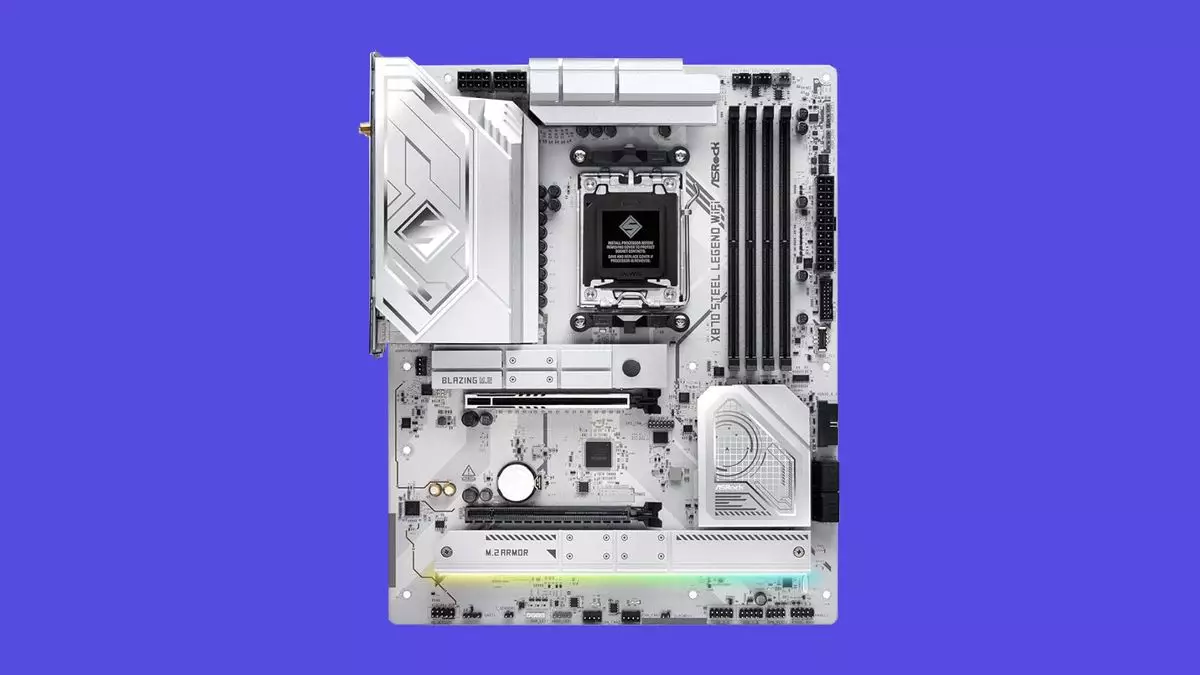The tech world is rife with challenges, and one of the most pressing issues recently has been the peculiar cases of damaged AMD Ryzen 9000 chips linked to ASRock’s X870 motherboards. Given the ever-increasing complexity and sophistication of PC components, it comes as no surprise when users report hardware failures. In February, I suspected there was more to this story, and now ASRock’s latest blog offers insights that delve deeper into the ongoing saga.
What stands out in ASRock’s findings is a somewhat unexpected culprit: crumbs. Yes, you read that right. Apparently, one of the identified malfunctioning X870 motherboards was returned to ASRock for an in-depth analysis. To the surprise of many, the preliminary inspection did not reveal any catastrophic damage or burn marks around the Voltage Regulator Module (VRM) area, an essential component responsible for supplying power to the CPU. Instead, it was a case of routine negligence leading to an extraordinary failure. The mere presence of debris in the CPU socket raised eyebrows and questions about the importance of maintenance in high-performance systems.
A Lesson in Maintenance and Design
The revelations from ASRock put the spotlight on the significance of regular upkeep and cleanliness within PC systems. In sports, there’s a popular adage: “cleanliness is next to godliness,” and in the tech universe, this couldn’t be more accurate. Users often overlook that thermal paste, dust, and crumbs can jeopardize the fragile relationships between components. As evidenced by the findings, resident debris had led to shorts that resulted in the CPU’s demise, highlighting an essential but frequently ignored aspect of PC maintenance.
While it was encouraging that the motherboard could power up after cleaning, it raises the question: Did ASRock engineer a product robust enough to withstand common user errors? Their ability to recover a seemingly damaged board suggests a level of engineering excellence, but it also insinuates a deeper issue with consumer awareness or lack thereof. It underscores the need for educational resources aimed at users who might not possess intricate knowledge about PC maintenance.
The BIOS Band-Aid: A Dual-Edged Sword?
ASRock’s unveiling of a new BIOS version 3.20 poses another interesting layer to the discussion. While the company assures users that this update does not contribute to CPU damage, it simultaneously acknowledges that previous BIOS iterations had compatibility issues with some 9000-series CPUs, leading to boot failures. This speaks to a larger narrative in the tech industry: as systems become more advanced, software inadequacies can equally hinder functionality.
On the one hand, introducing a fix that enhances memory compatibility amid the chaos of user frustrations is reassuring. However, it’s essential to consider the implications of such issues arising in the first place. Are manufacturers racing to market with under-tested products, or is the sheer complexity of modern electronics rendering it inevitable? This paradox is a discussion worth having as we venture further into an era where technology is no longer merely an extension of ourselves but rather an entity rife with its own challenges.
User Experience and Corporate Responsibility
ASRock’s commitment to addressing these reported incidents points to a significant element of contemporary consumer electronics: corporate responsibility. It’s clear that they are taking the matter seriously, reaching out to affected users, and recovering motherboards for thorough inspections. However, the lingering query of whether there is a broader pattern remains unanswered. Will this lead to a cascading effect, with other manufacturers reevaluating their products and practices?
It’s also crucial for tech companies to provide users with real-time, ongoing support that reflects the urgency of hardware issues. Clear communication coupled with actionable solutions can enhance user experience and foster brand loyalty.
In this digital age, where information flows freely and instantaneously, how manufacturers respond to issues can drastically affect their reputation. ASRock’s self-analysis might just be the nudge needed for others to follow suit, instigating a broader conversation about product quality, user experience, and the responsibilities that come with technological prowess.
In essence, while ASRock navigates these choppy waters, it also stands as a reminder to all tech enthusiasts about the importance of diligence, communication, and maintaining our systems for peak performance.

